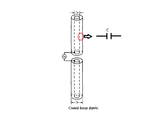ghasem_008
Full Member level 4

- Joined
- Feb 9, 2012
- Messages
- 221
- Helped
- 11
- Reputation
- 22
- Reaction score
- 10
- Trophy points
- 1,298
- Activity points
- 2,990
Hi.
why in a dielectric-coated cylindrical (metal) monopole antenna,increasing of dielectric thickness,decrease resonant frequency of antenna?
or why decrease bandwidth?
thanks
why in a dielectric-coated cylindrical (metal) monopole antenna,increasing of dielectric thickness,decrease resonant frequency of antenna?
or why decrease bandwidth?
thanks

